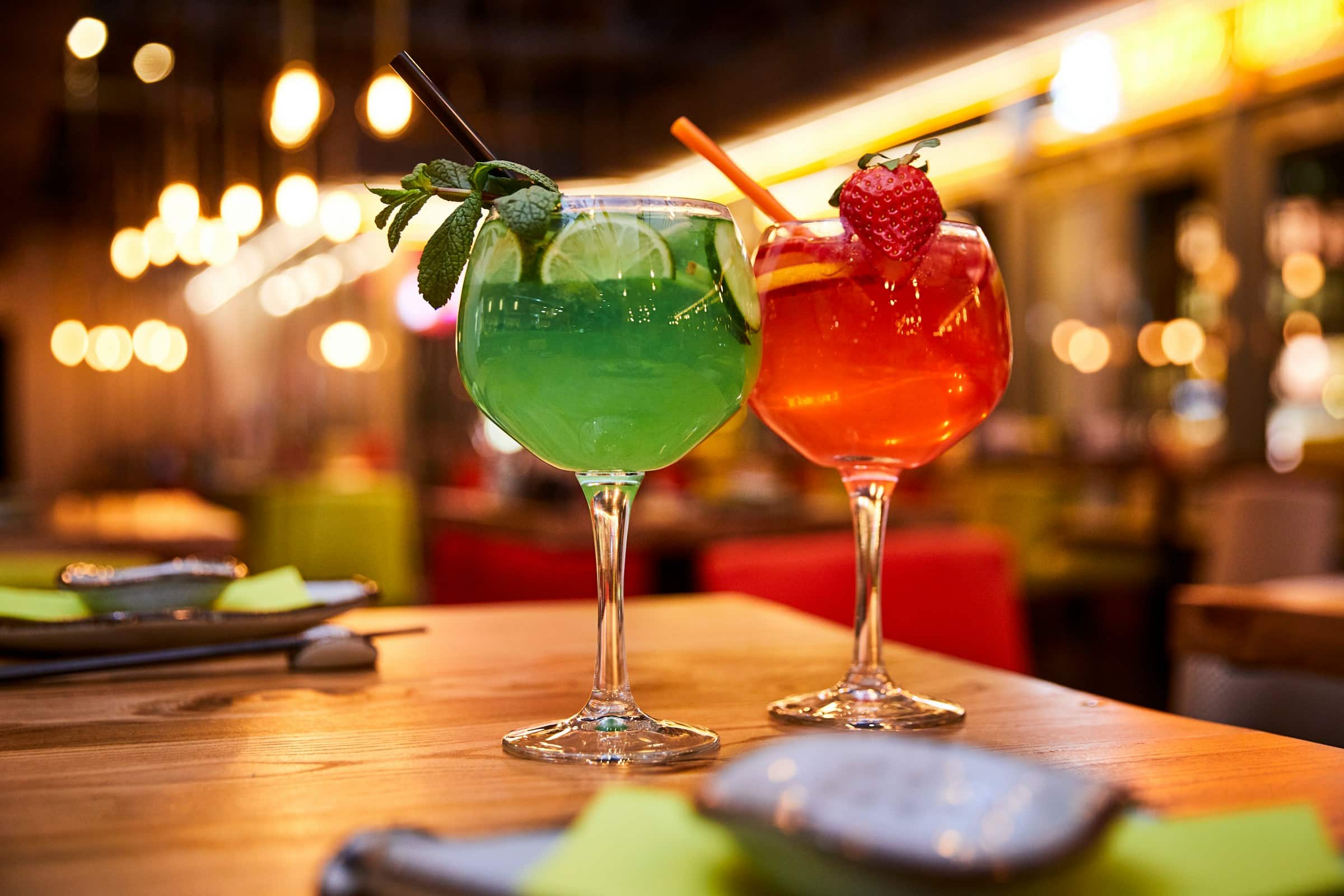
How should you structure the layout of a restaurant to maximize natural light?
How you structure and design your restaurant's interior can have a profound influence on your customers' dining experience. The layout and lighting, in particular, play a vital role in this. A carefully considered design will create an inviting and comfortable space that encourages customers to linger and enjoy their meal. One important but often overlooked element of this design is the use of natural light. By maximizing natural light you not only create a warm and inviting atmosphere, but you can also save on energy costs. This article will examine how you should structure your restaurant to maximize natural light.
Is Natural Light Important in a Restaurant Setting?
Before diving into the specifics of restaurant layout and design, it is essential to understand the role and importance of natural light in a restaurant setting. Natural light has a powerful influence on our mood and behavior. Studies demonstrate that exposure to natural light can increase feelings of happiness and well-being. So, it stands to reason that maximizing natural light in your restaurant will create a more positive dining experience for your customers.
Cela peut vous intéresser : What are the innovative ways to use technology for tableside ordering in a fast-casual restaurant?
In the context of a restaurant, natural light can also enhance the visual appeal of both the space and the food. It can make the color of the food more vibrant and visually appealing, which in turn can stimulate the appetite. Additionally, natural light can make a space feel more open and airy, contributing to a more relaxed and enjoyable dining experience.
How to Maximize Natural Light at Your Restaurant: Layout Considerations
When it comes to maximizing natural light, the layout of your restaurant is a key factor to consider. The first thing you should do is to make the most out of the available windows. Position tables and seating areas so they are exposed to as much natural light as possible. Avoid placing large pieces of furniture or other obstructions in front of windows, as this can block the light.
Cela peut vous intéresser : How can you optimize a small bar space for high efficiency during rush hours?
The design of the restaurant should also support the flow of natural light. For example, an open plan layout will allow light to spread uniformly throughout the space, reaching even the farthest corners. Similarly, using glass dividers instead of solid walls can help to distribute light more evenly.
Finally, remember that the orientation of the restaurant will also affect the amount of natural light you receive. A south-facing space will get the most sunlight throughout the day, followed by west-facing spaces. East-facing spaces will receive morning light, while north-facing spaces will have the least amount of sunlight.
The Role of Color and Material in Maximizing Natural Light
The color palette and materials you choose for your restaurant's interior can significantly affect how much natural light you are able to maximize. Bright and light colors, for instance, reflect more light than dark colors. By painting walls and ceilings in light shades, you can help to bounce light around the room, making the space feel brighter and more spacious.
Similarly, shiny and reflective surfaces can help to maximize natural light. Materials like glass, stainless steel, and glossy tiles can reflect light and make a space feel more luminous. Mirrors can also be a great way to enhance natural light. Positioning mirrors opposite windows or in darker corners can help to reflect light and increase the overall brightness of the space.
Incorporating LED lights to Complement Natural Light
While natural light should be the primary source of illumination, supplemental lighting will be necessary, especially during the evening hours or in spaces with limited access to natural light. LED lights can be a great option in these cases.
LEDs offer a number of advantages over traditional lighting options. They are more energy-efficient, longer-lasting, and offer a range of color temperatures, allowing you to mimic the feel of natural light. When selecting LEDs, opt for those with a high Color Rendering Index (CRI). A high CRI rating means the light will render colors more accurately, making your food and interior decor look their best.
In addition to overhead lighting, consider using LED strip lights or spotlights to highlight specific areas or features within your restaurant. For example, spotlighting artwork or architectural features can create depth and interest, while under-counter LED lights can add a touch of modern sophistication.
Strategic Furniture Placement for Light Optimization
The placement of furniture is another factor that can influence the amount of natural light within your restaurant. Strategically arranging your furniture can help to maximize exposure to natural light, create a sense of spaciousness, and enhance the overall dining experience for your customers.
In general, dining tables and chairs should be placed near windows to make the most of the natural light. In larger restaurants, consider clustering tables in the center of the room, away from the periphery, to avoid blocking the flow of light.
Furthermore, consider the material and color of your furniture. Light-colored furniture, or pieces made from reflective materials like glass or polished metal, can help to reflect light around the room and make the space feel brighter. Conversely, avoid dark, heavy furniture, as this can absorb light and make the space feel smaller and darker.
By considering the layout, color palette, lighting, and furniture placement, you can maximize the natural light in your restaurant and create an inviting, comfortable space that your customers will love.
The Impact of the Floor Plan on Natural Light
The floor plan of your restaurant is a vital element when it comes to making the most of natural light. There are several strategies you can use to take advantage of your layout to amplify the amount of sunlight that permeates your space.
First and foremost, it is crucial to consider the orientation of your restaurant. The direction your establishment faces will dictate the amount and type of sunlight it receives throughout the day. If possible, opt for a south-facing location as it will receive ample sunlight all day long. However, if this is not feasible, do not despair. You can still use clever design strategies to increase the amount of light, no matter the orientation of your restaurant.
For instance, opting for an open floor plan can work wonders in spreading natural light throughout your space. This design allows light to flow freely, reaching even the darkest corners of your restaurant. If an open plan is not possible, consider using glass partitions to divide the space. These partitions allow light to pass through, unlike solid walls that can block sunlight.
Moreover, be mindful of where you place large pieces of furniture or interior elements. They should never block your windows, as this can hinder the flow of light. Instead, arrange them in a way that they do not obstruct natural light, allowing it to spread throughout your dining area.
Lastly, remember that where you place your dining tables is key. Ideally, they should be placed near windows to provide your customers with a bright and pleasant dining experience.
Conclusion: Designing a Restaurant for Optimal Natural Light
In conclusion, the interior design of your restaurant plays a pivotal role in determining how much natural light you can make the most of. From the choice of color palette and materials to the strategic placement of furniture and the use of LED lighting, many factors can influence the amount of sunlight that illuminates your restaurant.
An open floor plan, large windows, light-colored paint, and reflective surfaces are all effective ways to increase the natural light in your restaurant. However, it is also crucial to remember that even the best-laid plans can be foiled by poor execution. Therefore, it is advisable to seek the help of a professional interior designer who specializes in restaurant design. They can provide expert advice and ensure that your restaurant maximizes natural light effectively.
By making smart choices in your restaurant design, you can create a warm, inviting, and energy-efficient space that enriches the dining experience for your customers. After all, eating out is about more than just food; it is about the whole experience. By making your restaurant a bright and enjoyable place to be, you are sure to keep your customers coming back for more.
By maximizing the use of natural light in your restaurant, you are not only improving the appearance of your space but also saving on energy costs. There is no doubt that a well-lit restaurant creates a positive dining experience. So take the time to plan your restaurant layout carefully and reap the rewards of a well-lit, energy-efficient, and aesthetically pleasing dining area.
